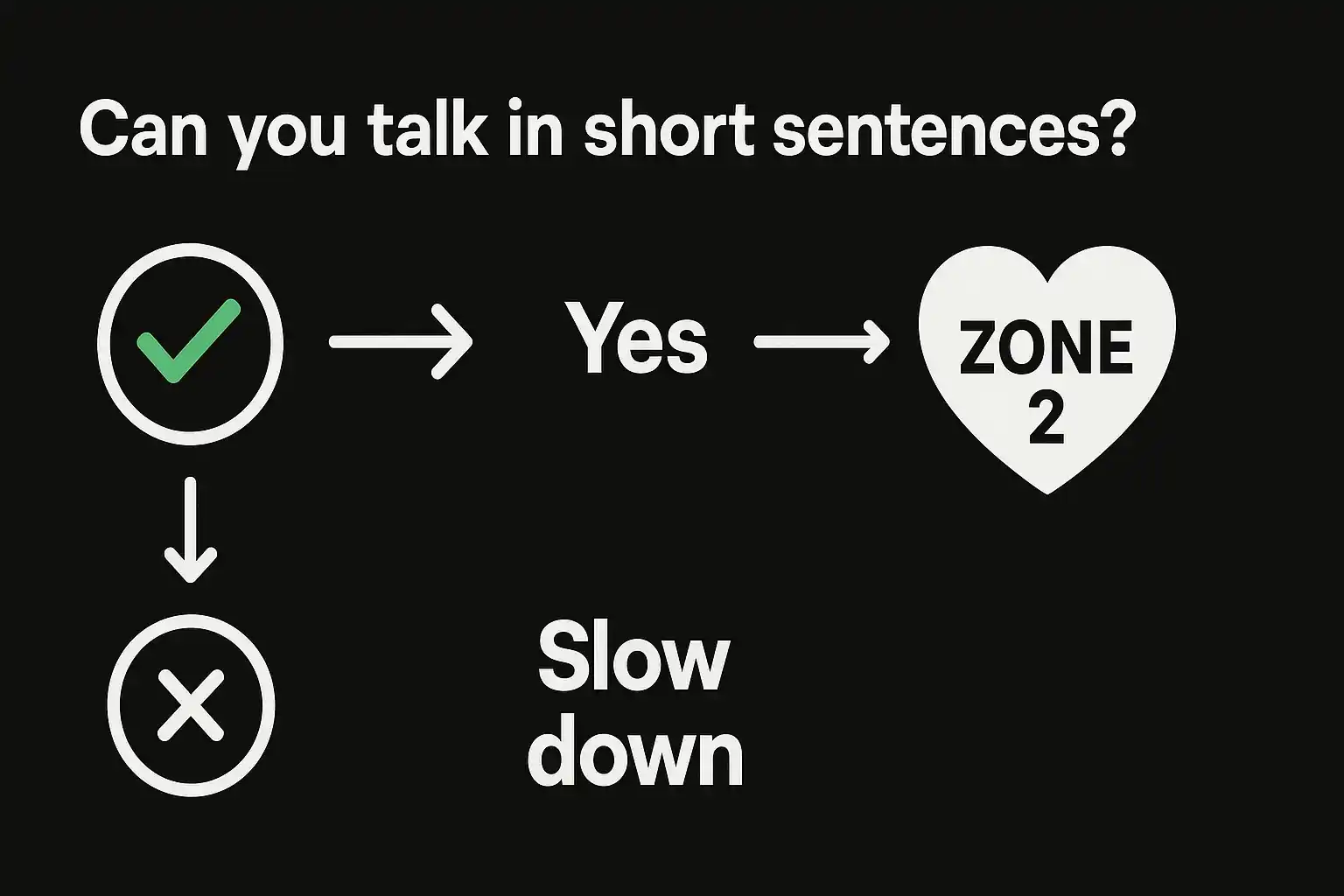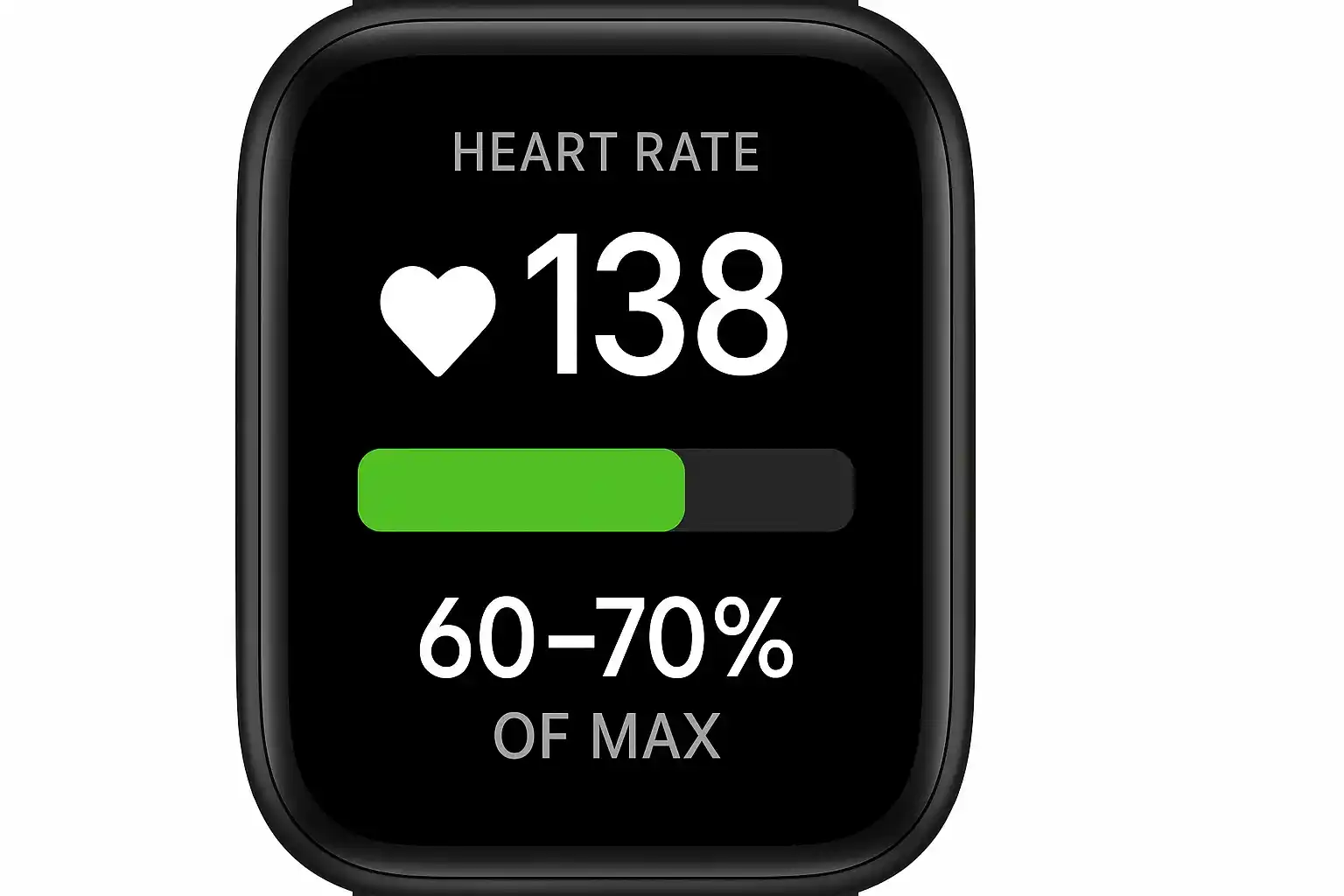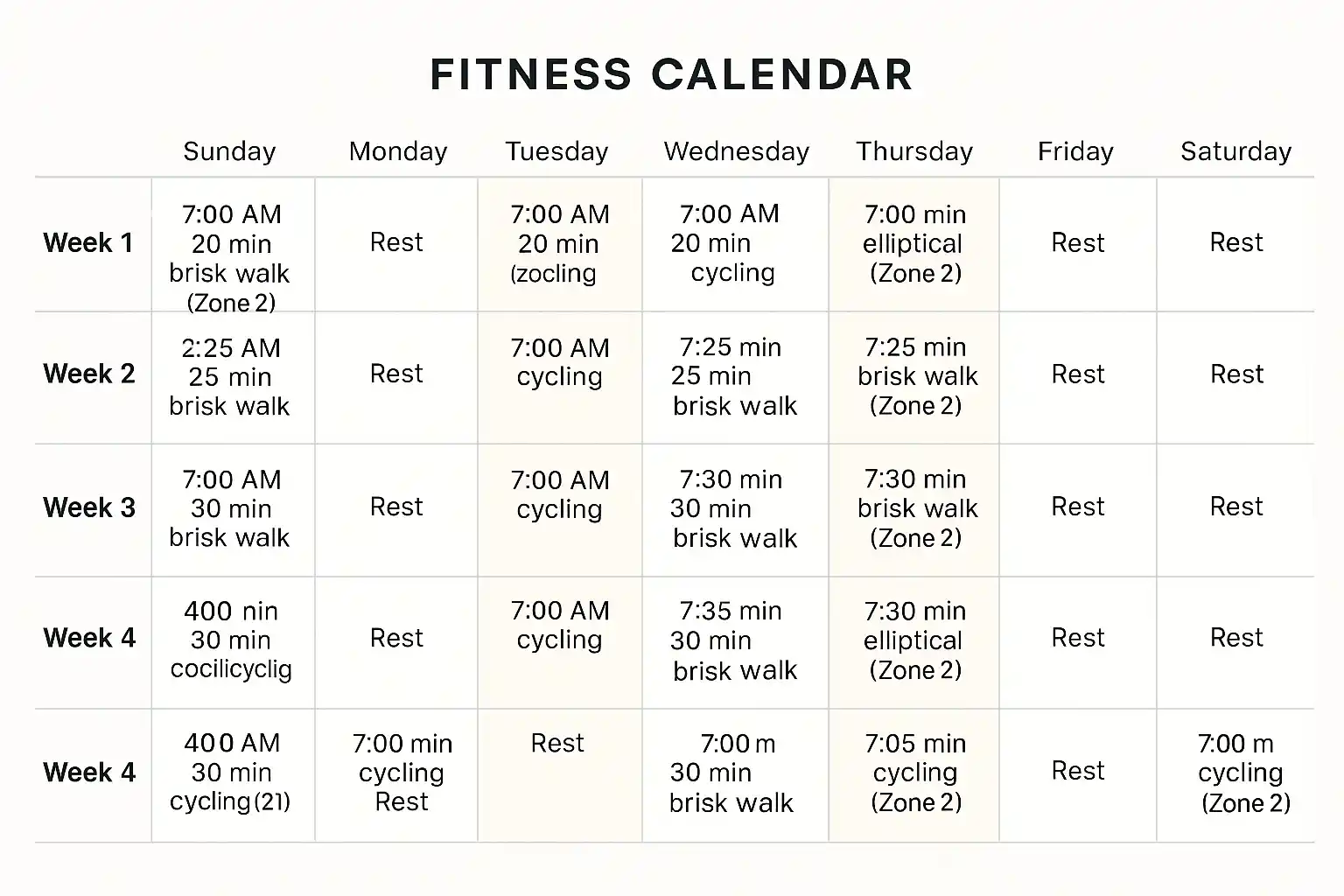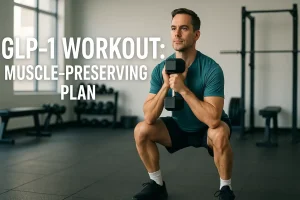Zone 2 Cardio Made Simple: Feel Stronger in 4 Weeks

Getting started with Zone 2 cardio at conversational pace.
Discover Your Fitness BFF: Zone 2 Cardio!
Welcome to the secret world of Zone 2 cardio, where the magic happens without the misery! Imagine a workout where you can actually breathe, chat with a friend, and even enjoy the view, all while your body becomes a super-efficient, fat-burning machine. This isn’t about pushing until you see stars; it’s about finding that sweet spot in your heart rate zones where endurance is built, energy soars, and stress melts away. Think of it as a cozy conversation pace for your heart—the ultimate beginner cardio that’s gentle on your joints but powerful for your health.
Ready to kickstart your endurance plan? The best part about Zone 2 cardio is that it’s accessible to everyone. Whether you’re power-walking, cycling, or dancing around your living room, the goal is steady, sustainable movement that feels good. This fat-burning cardio style teaches your body to use fuel more efficiently, meaning you’ll build a fitness foundation that supports every other goal—without ever leaving you feeling drained. So lace up those shoes, find your groove, and let’s make fitness fun again!
Zone 2 Cardio: Made Simple (4-Week Plan)
Zone 2 cardio is the sweet spot where effort feels steady and conversational, not crushing. It’s the easiest place to build endurance, improve everyday energy, and actually stick with cardio. This guide shows you exactly how to get into Zone 2 using the talk test or a wearable, then follows with a simple four-week plan you can repeat all year.
What is Zone 2? Most health groups describe it as moderate intensity—typically about 60–70% of your maximum heart rate—where you can speak in short sentences without gasping. If heart-rate tracking isn’t reliable for you (for example, some meds like beta blockers can blunt HR), you can steer entirely by the talk test and feel. AHA target HR zones · CDC talk test · Harvard on beta blockers.
Contents
- Quick Start (read this first)
- What counts as Zone 2?
- How to find your Zone 2 (no lab needed)
- Setup tips for treadmill, outdoor, and cycling
- Zone 2 cardio: 4-week plan (busy-adult friendly)
- Sample pace & heart-rate guide
- Common mistakes & easy fixes
- FAQs
- More Fitness Guides
- References
Quick Start (read this first)
- Pick your mode: brisk walking, easy jog, indoor bike, or elliptical. Choose what you’ll actually repeat.
- Use the talk test: you can speak in short sentences, not sing. That’s a solid Zone 2 signal. CDC
- Optional wearable: aim for roughly 60–70% of max HR (estimate max as 220 − age). AHA chart
- Start with 20–30 minutes, 3–5 days/week. Build a few minutes each week.
- Keep it easy enough to finish strong. If you can’t hold the talk test, slow down or reduce grade/resistance.
- Add two short strength sessions weekly to support joints and muscle. CDC guidelines
- Track a simple metric: minutes in Zone 2, steps, or bike distance—whichever keeps you consistent.
- Stay patient: Zone 2 progress is quiet but steady. Endurance and day-to-day energy climb over weeks, not days.
What counts as Zone 2?
Experts and clinics commonly frame Zone 2 as moderate-intensity aerobic work—about 60–70% of HRmax for many people, or “conversational pace.” At this effort, you’re breathing faster but can still talk in short phrases. Cleveland Clinic: HR zones · CDC talk test.
Why it’s useful: moderate, sustainable work builds your aerobic base—supporting mitochondria, capillaries, and the ability to use oxygen efficiently—without leaving you exhausted for daily life. Review on endurance adaptations.
How to find your Zone 2 (no lab needed)

Option A: Talk test (simple and reliable)
- If you can talk in short sentences (not sing), you’re likely in Zone 2.
- If you can only speak a few words, that’s closer to vigorous (Zone 3+). Ease off to return to Zone 2.
Option B: Heart rate (wearable or machine)
- Estimate HRmax ≈ 220 − age (a rough guide). Zone 2 is ~60–70% of that value. AHA
- Some medications (e.g., beta blockers) can make HR readings lower than expected. In that case, trust the talk test and your clinician’s advice. Harvard Health
Option C: Feel (RPE)
- On a 1–10 effort scale, Zone 2 feels like a 3–4/10: steady, warm, and repeatable the next day.
Setup tips for treadmill, outdoor, and cycling

Treadmill
- Start flat or at 1–2% incline. Walk briskly; use short steps and relaxed shoulders.
- Only hold rails briefly for balance. If you must hold on, lower speed/grade until you can let go.
Outdoor walking/jogging
- Use flat or gently rolling routes. Hills can spike HR—slow down on climbs to stay in Zone 2.
- Wind, heat, and lack of sleep raise HR—let the talk test guide you on tough days.
Indoor or outdoor cycling
- Spin at a light-to-moderate gear you can hold for 20–45 minutes with steady breathing.
- If your legs burn but breathing is easy, shift lighter—we want steady aerobic, not heavy muscular fatigue.
Zone 2 cardio: 4-week plan (busy-adult friendly)

Target: 3–5 sessions per week. Start where you are; build minutes and frequency gradually. This pairs well with two 20–30 minute strength sessions each week.
Week 1 — Set the base
- 3 sessions × 20–25 minutes Zone 2
- Warm up 5 minutes easy, finish with 3 minutes easy
- Strength (2 days): squats or leg press, hip hinge, row or pull-down, plank (2 sets each)
Week 2 — Extend the ride
- 4 sessions total: two at 25 minutes, two at 30 minutes
- If HR drifts up, slow the pace slightly to keep speech in short sentences
Week 3 — Build endurance
- 4–5 sessions: one at 35 minutes, the rest 25–30 minutes
- One optional “steady hills” treadmill or gentle rolling route—manage effort to stay conversational
Week 4 — Your sustainable routine
- 3–5 sessions: choose a repeatable mix (e.g., 2 × 35 minutes + 2 × 25 minutes)
- Keep two short strength days; recovery walks or mobility on off-days
After Week 4: stay here or add 5 minutes to one session each week until you reach your preferred weekly volume. You can also sprinkle in one short, higher-intensity day if you enjoy it—but Zone 2 should remain the backbone.
Sample pace & heart-rate guide
These are examples, not rules—let the talk test lead.
| Mode | Typical Zone 2 Starting Point | Talk Test Check |
|---|---|---|
| Brisk walk (flat) | 2.9–3.6 mph | Can talk in short sentences without gasping; light sweat after 10–15 minutes |
| Treadmill (1–2% incline) | 2.8–3.3 mph | Short phrases OK; if you can’t, slow slightly or reduce incline |
| Easy jog | Comfortable shuffle pace | Breathing steady; able to chat in fragments |
| Indoor bike | 90–100 rpm, light gear | Legs feel light; breathing steady; can maintain 20–40 minutes |
| Outdoor bike (flat) | Easy spin with tailwind/flat terrain | Conversational pace; drop to lighter gear on rises |
Common mistakes & easy fixes
- Going too hard: if you can’t speak in short sentences, you’re out of Zone 2. Slow down or reduce incline/gear.
- Chasing someone else’s heart-rate number: age, meds, sleep, heat and stress change HR. Use your own talk test and ranges.
- Skipping strength work: two short days/week protect joints and support body composition alongside Zone 2.
- Ignoring recovery: easy days make hard days possible—sleep, hydration, and low-stress walks count.
- Only steps, no minutes: track minutes in Zone 2 or time-at-conversational pace for clearer progress.
Getting started with Zone 2 cardio
Get ready to fall in love with the most enjoyable and sustainable beginner cardio you’ll ever try! Zone 2 cardio is your secret weapon, a powerful form of fat-burning cardio that feels more like an energizing adventure than a grueling workout. By understanding your heart rate zones, you unlock a world where you can chat, smile, and build incredible endurance without feeling wiped out. This is the heart of a smart endurance plan designed to make you feel stronger, happier, and more alive with every single step. Let’s get moving and make it happen
FAQs
How many Zone 2 minutes per week should I aim for?
The CDC recommends at least 150 minutes of moderate activity per week. Many people feel great with 3–5 Zone 2 sessions (20–40 minutes each), plus two short strength days. CDC guidelines
Do I need a heart-rate monitor?
No. The talk test works well. If you do use a wearable, treat numbers as guides, not absolutes. CDC
What if I’m on meds that affect heart rate?
Some medications (like beta blockers) can lower HR readings. Use the talk test and your clinician’s advice. Harvard Health
Is Zone 2 better than HIIT?
They serve different purposes. Zone 2 builds endurance and recovery capacity with low stress; HIIT builds top-end fitness. Many programs blend both, but most adults benefit from a steady Zone 2 base. Endurance adaptations overview
Can Zone 2 help weight management?
It helps you accumulate activity minutes consistently—key for energy balance—especially when paired with adequate protein and two strength days. Consistency beats occasional all-out efforts.
How should Zone 2 feel over time?
Breathing becomes easier at the same pace; you’ll go farther in the same time. That’s the base-building effect most people want from cardio.
More Fitness Guides
Want more step-by-step plans and strength add-ons? Visit our Fitness hub.
References
- American Heart Association. Target Heart Rate (updated Aug 2024).
- Centers for Disease Control and Prevention. Physical Activity Guidelines for Adults.
- CDC. Measuring Physical Activity Intensity (Talk Test).
- Cleveland Clinic. Exercise Heart Rate Zones Explained.
- Harvard Health Publishing. Do beta blockers interfere with exercise? (Feb 2024).
- Mølmen KS et al. Endurance training adaptations: mitochondrial and capillary changes (2024 review).
Safety: Exercise is generally safe when you build gradually and stop with sharp pain, dizziness, or chest discomfort. If you have cardiovascular, respiratory, metabolic, or orthopedic conditions, get personalized guidance first.






